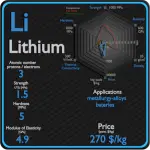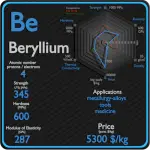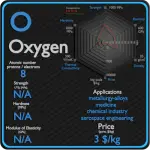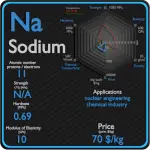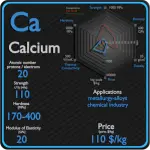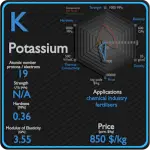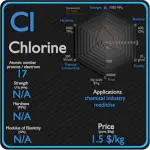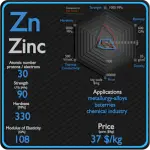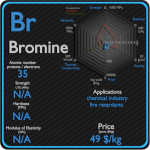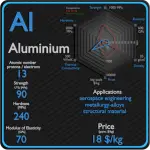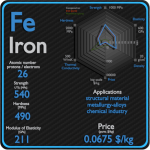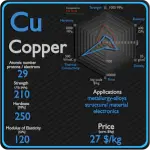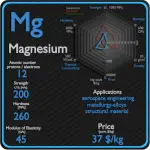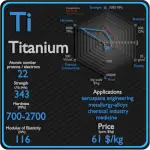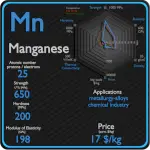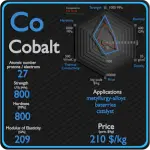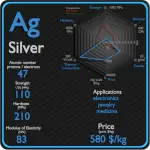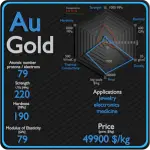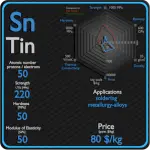This article contains comparison of key thermal and atomic properties of magnesium and copper, two comparable chemical elements from the periodic table. It also contains basic descriptions and applications of both elements. Magnesium vs Copper.
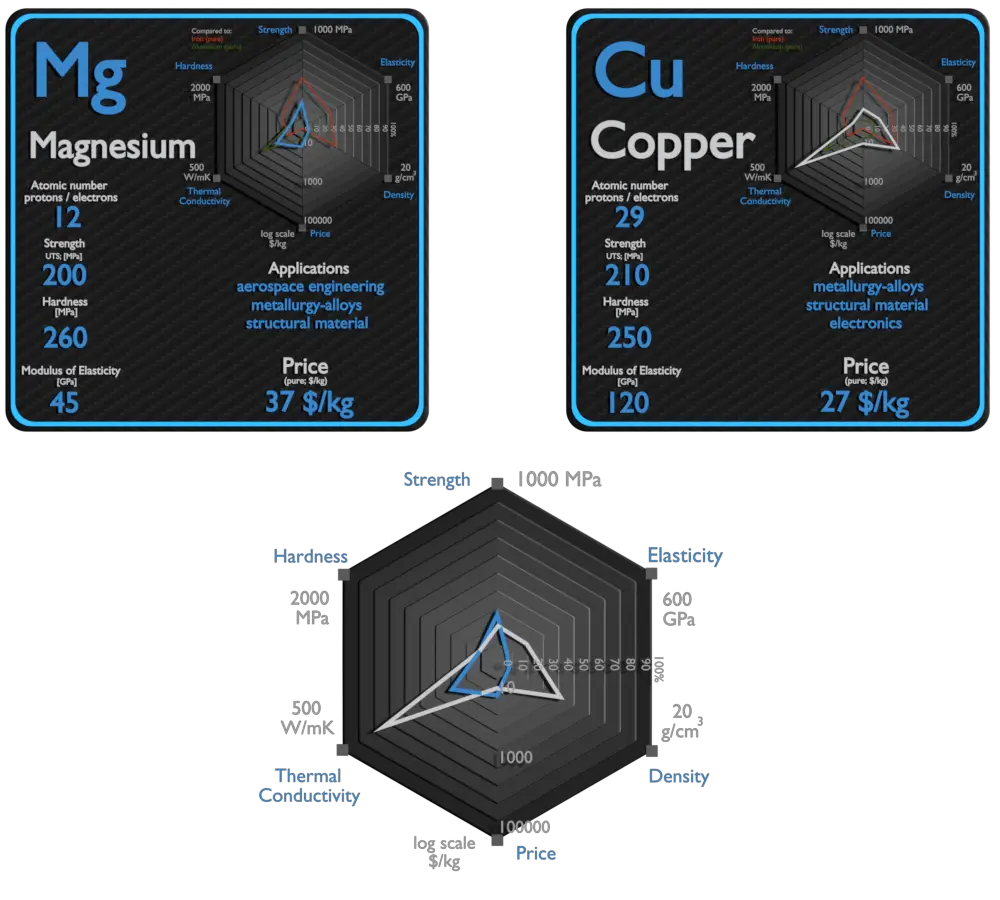
Magnesium and Copper – About Elements
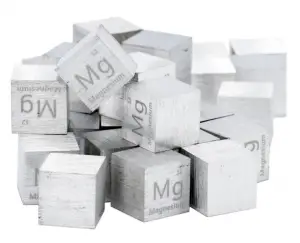
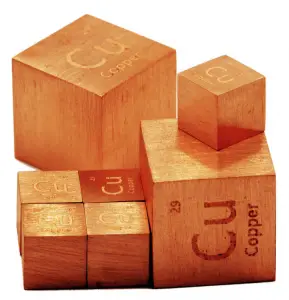
Source: www.luciteria.com
Magnesium and Copper – Applications
Magnesium
Magnesium is the third-most-commonly-used structural metal, following iron and aluminium.[35] The main applications of magnesium are, in order: aluminium alloys, die-casting (alloyed with zinc), removing sulfur in the production of iron and steel, and the production of titanium in the Kroll process. Magnesium alloys are used in a wide variety of structural and nonstructural applications. Structural applications include automotive, industrial, materials-handling, commercial, and aerospace equipment. Magnesium alloys are used for parts that operate at high speeds and thus must be light weight to minimize inertial forces. Commercial applications include hand-held tools, laptops, luggage, and ladders, automobiles (e.g., steering wheels and columns, seat frames, transmission cases). Magnox (alloy), whose name is an abbreviation for “magnesium non-oxidizing”, is 99% magnesium and 1% aluminum, and is used in the cladding of fuel rods in magnox nuclear power reactors.
Copper
Historically, alloying copper with another metal, for example tin to make bronze, was first practiced about 4000 years after the discovery of copper smelting, and about 2000 years after “natural bronze” had come into general use. An ancient civilization is defined to be in the Bronze Age either by producing bronze by smelting its own copper and alloying with tin, arsenic, or other metals. The major applications of copper are electrical wire (60%), roofing and plumbing (20%), and industrial machinery (15%). Copper is used mostly as a pure metal, but when greater hardness is required, it is put into such alloys as brass and bronze (5% of total use). Copper and copper-based alloys including brasses (Cu-Zn) and bronzes (Cu-Sn) are widely used in different industrial and societal applications. Some of the common uses for brass alloys include costume jewelry, locks, hinges, gears, bearings, ammunition casings, automotive radiators, musical instruments, electronic packaging, and coins. Bronze, or bronze-like alloys and mixtures, were used for coins over a longer period. is still widely used today for springs, bearings, bushings, automobile transmission pilot bearings, and similar fittings, and is particularly common in the bearings of small electric motors. Brass and bronze are common engineering materials in modern architecture and primarily used for roofing and facade cladding due to their visual appearance.
Magnesium and Copper – Comparison in Table
| Element | Magnesium | Copper |
| Density | 1.738 g/cm3 | 8.92 g/cm3 |
| Ultimate Tensile Strength | 200 MPa | 210 MPa |
| Yield Strength | N/A | 33 MPa |
| Young’s Modulus of Elasticity | 45 GPa | 120 GPa |
| Mohs Scale | 2.5 | 3 |
| Brinell Hardness | 260 MPa | 250 MPa |
| Vickers Hardness | N/A | 350 MPa |
| Melting Point | 649 °C | 1084.62 °C |
| Boiling Point | 1090 °C | 2562 °C |
| Thermal Conductivity | 156 W/mK | 401 W/mK |
| Thermal Expansion Coefficient | 24.8 µm/mK | 16.5 µm/mK |
| Specific Heat | 1.02 J/g K | 0.38 J/g K |
| Heat of Fusion | 8.954 kJ/mol | 13.05 kJ/mol |
| Heat of Vaporization | 127.4 kJ/mol | 300.3 kJ/mol |
